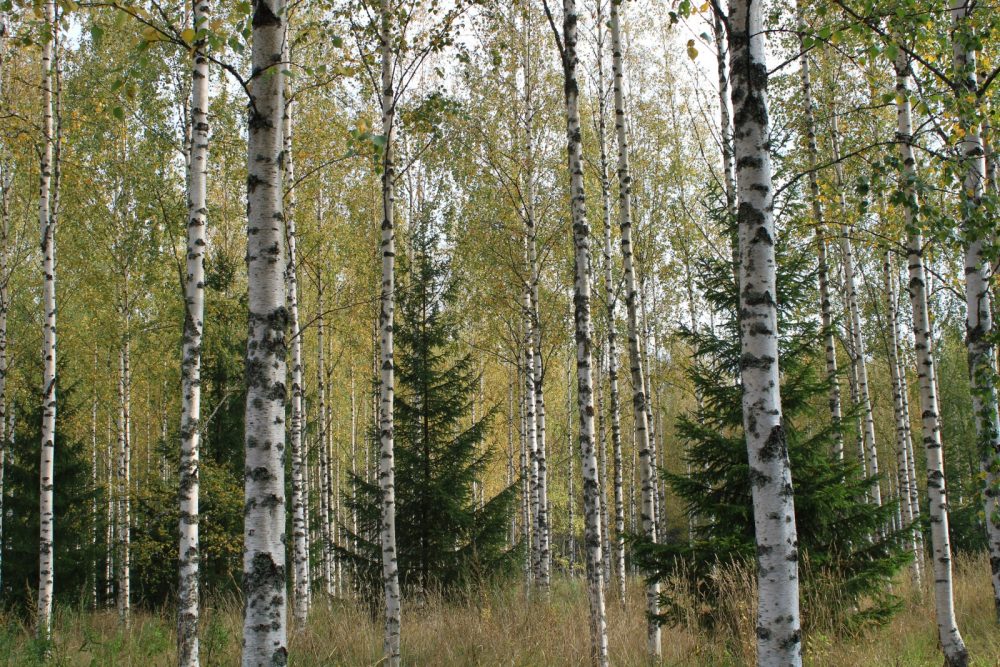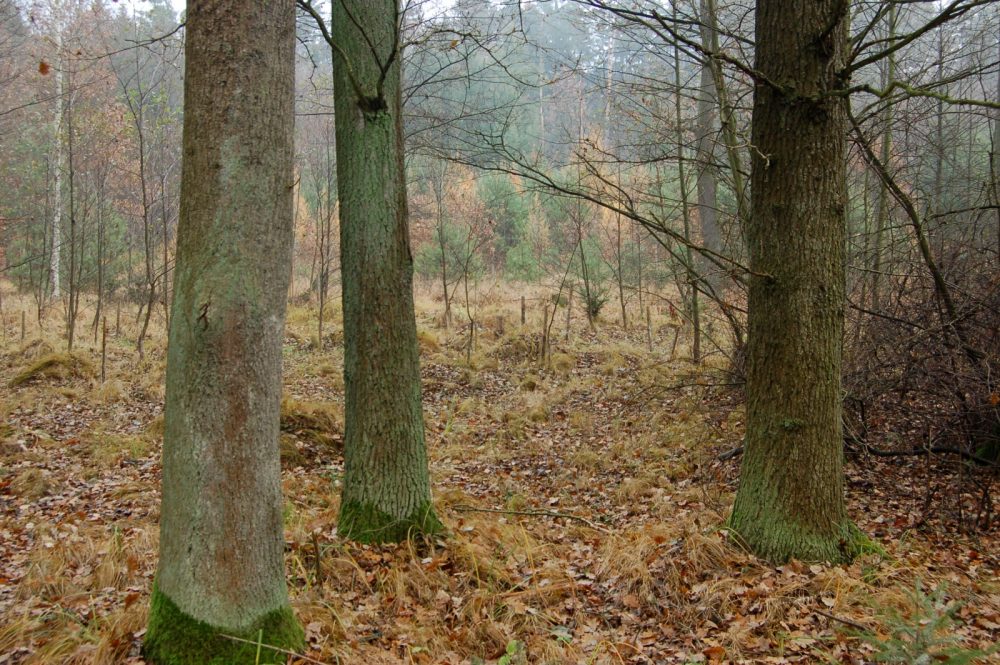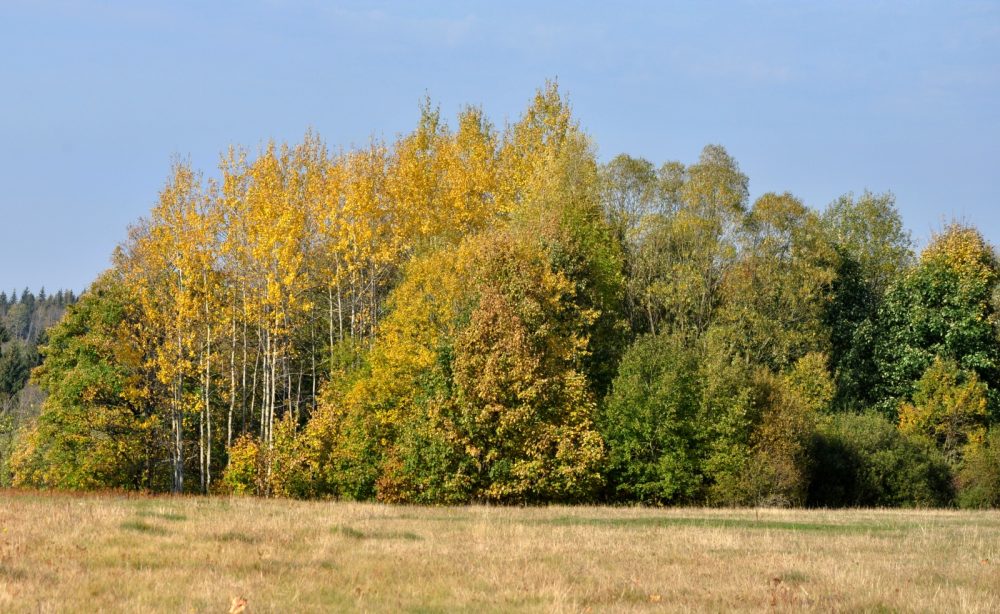Will pioneer tree species substitute spruce production?
 The nature of global climate changes lead us to consider changes in forest management. Scientists and foresters are testing and introducing hitherto neglected tree species and silviculture practices, preferring to move away from pasture management. Their attention is focused on drought-tolerant, resistant species, or selected provenances of tree species suitable for the given site conditions. For forest regeneration, they are looking for tree species capable of withstanding the conditions on calamitous clearings and also providing the desired wood raw material in a relatively short time. A key position here is occupied by tree species with a pioneering strategy.
The nature of global climate changes lead us to consider changes in forest management. Scientists and foresters are testing and introducing hitherto neglected tree species and silviculture practices, preferring to move away from pasture management. Their attention is focused on drought-tolerant, resistant species, or selected provenances of tree species suitable for the given site conditions. For forest regeneration, they are looking for tree species capable of withstanding the conditions on calamitous clearings and also providing the desired wood raw material in a relatively short time. A key position here is occupied by tree species with a pioneering strategy.
There is still lack of knowledge about the properties of these trees and about their growth and vital characteristics in forest stands. Therefore, scientists from the Opočno Research Station, FGMRI, processed comprehensive information from various sources about the site influence on the pioneer tree species growth and production, as for Silver birch, black alder, European aspen and goat willow, i.e. for tree species commonly growing in areas of non-native spruce stands, where they can be used significantly in the forest regeneration after calamities.
They published their findings in the article „Vliv stanoviště na růst a produkci vybraných druhů pionýrských dřevin“, which was published in the journal Forest Research News 3/2022. Here, they summarize the ecological (site) requirements of the mentioned tree species, analyze their growth dynamics and production potential, and compare the production of the given tree species in a specific site with other species.
More detailed information can be found in the Summary of this paper, which is reprinted here, with the kind permission of the authors:
Effect of site conditions on the growth and yield of selected pioneer species – review
 SUMMARY
SUMMARY
The paper deals with production capacity of selected pioneer species – Silver birch, black alder, European aspen, and goat willow. Pioneer species are used for reforestation after calamities, and their production and yield are discussed nowadays (Pommerening, Murphy 2004; Stark et al. 2015; Souček et al. 2016; Martiník et al. 2018a; Čížková et al. 2020; Dubois et al. 2020). The review summarizes accessible information about ecology requirements and natural distribution of discussed species, their growth and yield according to the site conditions, and yield comparison of these species. We used professional books and scientific papers describing information about these species from the perspective of European conditions.
Silver birch, European aspen, black alder and goat willow are naturally distributed throughout Eurasia, they occupy wide range of climate and thrive on great diversity of soils (Svoboda 1957; Worrell 1995a; Ellenberg 2009; Úradníček et al. 2009; Hynynen et al. 2010). The vigorous growth and marketable production of Silver birch are supposed on fertile soils with adequate moisture and air content (Hynynen et al. 2010; Dudík et al. 2021). Warmer climate and lower altitudes create optimum growing conditions for European aspen (Ellenberg 2009). Rich sites and middle altitude are also considered optimum conditions for goat willow (Úradníček et al. 2009). Within all of Europe the occurrence of black alder is closely linked to availability and abundance of water (Ellenberg 2009). The productivity of black alder is greatest on riverside site followed by plateau site with high level of soil moisture (Svoboda 1957; Claessens et al. 2010).
The mean annual volume increment (MAI) for analysed species varied from 4 to 10 (12) m3 /ha, for goat willow relevant data are missing (Ferm 1993; Worrell 1995b; Cameron 1996; Claessens et al. 2010; Hynynen et al. 2010). Rotation period for these species should not be longer than 55 (60) years due to the risk of heart rot occurrence (Hein et al. 2009; Claessens et al. 2010; Hynynen et al. 2010). Although there are similarities in terms of cubic volume productivity, wood densities of analysed species are different. This affects biomass productivity; the highest potential shows Silver birch with maximum annual increment ranged from 5 to 7 t/ha within the age of 15–25 years (Ferm 1993; Uri et al. 2012; Martiník et al. 2018a).
 Silver birch shows highest wood densities, for 12% moisture content is around 650 kg/m3 (Cameron 1996; Dubois et al. 2020). Black alder followed with the volume around 540 kg/m3 and the lowest wood densities (under 450 kg/m3) is described for goat willow and European aspen (Worrell 1995b; Claessens et al. 2010).
Silver birch shows highest wood densities, for 12% moisture content is around 650 kg/m3 (Cameron 1996; Dubois et al. 2020). Black alder followed with the volume around 540 kg/m3 and the lowest wood densities (under 450 kg/m3) is described for goat willow and European aspen (Worrell 1995b; Claessens et al. 2010).
The fast growth at the young age predetermines pioneer species as nurse crop species (Pommerening, Murphy 2004; Martiník, Sendecký 2018). Nurse crop treatments, where productivity of pioneer species is suppressed, allow to use black alder also on drier sites, where dominant species should be birch (poor, acid and rich soil from lower to higher altitude) or aspen (rich soil of lower and middle altitudes).
Except for site conditions, silvicultural practice (i.e. site preparation, regeneration origin, tree densities, clearing and thinning) can affect growth and yield of pioneer trees or stands (Niemistö 1995; Eriksson et al. 1997; Karlsson 2002; Martiník et al. 2018b; Dubois et al. 2020; Dudík et al. 2021). Faster growth in the young and shorter rotation period advantages production of pioneer species contrary to common shade tolerate species as spruce, fir and beech, in the process of reforestation of large clearing (Stark et al. 2015; Souček et al. 2016). In the present, growth of pioneer trees in forest stands is strongly influenced by the past decades approach, when pioneer species were considered as a weed (Dubois et al. 2020). They are growing on suboptimal site and this can lead to underestimation of yield class. Therefore, more detailed field survey is need to evaluate the yield of pioneer tree species.
The paper „Effect of site conditions on the growth and yield of selected pioneer species“ can be downloaded here.
Authors of the paper: Antonín Martiník, Jiří Souček, e-mail: antonin.martinik@mendelu.cz
Prepared by: Ing. Jan Řezáč, FGMRI, e-mail: rezac@vulhm.cz
Illustration photo: samples of birch, alder and aspen stands
